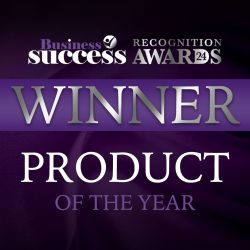Safeguard your brand in the UK
Trade Mark Most Asked Questions
Straightforward, fairly priced trade mark registration
Packages & Cost
Our packages for those who wish to protect their brands in the UK.
The Process
To register a trade mark across the entire European Union, the most efficient method is to file a European Union Trade mark (EUTM) application. This application covers all 27 EU Member States. The registration process typically takes about 4-5 months, so long as there are no objections.
The EUTM provides protection in every EU member state. A single similar trademark in any member state can lead to the rejection or cancellation of your application.
If accepted your ™ is registered for 10 years

Trade Mark Classes
Trade mark classes are a fundamental component of the international trade mark registration system, categorising goods and services into specific classes to streamline the process of protecting intellectual property. IP Offices worldwide use a trade mark classification system that groups together similar goods or services into 45 different classes.
These classes, established by the Nice Classification system, help define the scope of a trade mark by specifying the particular types of goods or services it covers. This classification is crucial for both businesses and legal professionals as it not only helps in the application and registration process but also aids in determining the likelihood of confusion with existing trade marks.
Trade mark classes refer to an international classification of goods and services applied for the registration of marks. There are 45 classes for different products and services. Goods are in classes 1 to 34 and services are in classes 35-45. For example, class 25 covers clothing.
Registering in more classes gives you broader protection but your application will become more expensive (due to additional government and service fees) and more complex.
It is important to find out the correct class(es) for your trade mark when applying, as trade marks can have more than one class. If you apply using the incorrect class, a new application will have to be made. Each additional class application has a charge of £120 (ex VAT). Feel free to contact us and our team will be able to advise which class(es) applies to your trade mark.
Choosing too many classes may increase the risk of opposition. We recommend selecting classes covering core business in the present and foreseeable future.
Classes of goods and services are an internationally agreed upon system for categorising businesses seeking trade mark registration based on their offerings.
This system ensures that similar brands are evaluated fairly. If they operate in different industries, they are less likely to cause confusion about the supplier of goods or services. Conversely, less similarity is needed between trade marks in the same sector to find a likelihood of confusion.
There are 45 classes: the first 34 cover physical products, and the remaining 11 cover services. Each class includes a list of goods and services that you need to specify in your trade mark application.
Choosing the correct goods and services can be one of the most challenging parts of the application process. For instance, Class 9 includes electronic goods and devices. If your business sells smartwatches, you might apply under Class 9 for electronic goods and Class 14 for jewellery, including watches. The choice of classes depends on your business activities and strategic considerations such as budget, expansion plans, and the presence of similar trade marks in the same class.
Trade mark classes are not entirely uniform across all countries, but there is significant consistency in classification systems used by different nations.
The international framework for trade mark classification is the Nice Classification, adopted by over 150 countries, including the United States, Canada, the European Union, and China. This system organises goods and services into 45 classes: 1-34 for goods and 35-45 for services.
Despite the Nice Classification providing a standard structure, individual countries may have specific criteria or nuances when implementing it. Some countries may include additional sub-classes or require specific phrasing for certain goods or services. Therefore, it’s essential to seek advice from a local trade mark attorney or agent when registering a trade mark in a specific country to ensure compliance with national requirements.
Yes, the lists of goods and services can vary by country or region. While the Nice Classification system provides a general framework, individual countries or regions may have their own specific requirements and variations.
Countries have the authority to adapt the classification system to align with their local laws and practices, leading to differences in how goods and services are classified or described. These variations might include additional subclasses, modifications to existing classes, or country-specific goods or services.
Yes, the cost of trade mark registration depends on the number of classes. Most jurisdictions charge a base price for the application, which includes one class of goods and services, with additional fees for each extra class. This cost varies by country. If you initially apply for one class, you cannot add more classes later; a new application is required.
Besides the number of classes, other significant cost factors include the chosen country or countries and whether you use a legal representative to file the application on your behalf.
No, trade mark classes categorise the goods and services your brand offers. You need to file applications for the wordmark and logo in the same classes. For instance, if you have a clothing brand, you will file one figurative trade mark in Class 25 (Clothing) and one word mark in the same class.
By understanding these steps and answers, you can navigate the trade mark process more effectively, ensuring comprehensive protection for your brand. If you have any further questions or need assistance, please do not hesitate to contact us at the National Business Register.
The number and choice of classes depend on the goods and services your brand offers. For example, a beauty products business might register its trade mark in Class 3, which includes cosmetics and cleaning preparations. Conversely, a company offering a fitness app might register in multiple classes: Class 9 for downloadable software, Class 41 for fitness training services, and Class 44 for health and wellness services.
On average, trade mark owners register 2-3 classes, but diversified brands may register in over 10 classes.
The choice also depends on the existence of similar registered trade marks within the same class. If such trade marks exist, their owners can oppose your application. Applicants sometimes limit the number of classes to avoid opposition or in response to raised opposition. You can search for similar trade marks using the IP office’s public database or an agent like National Business Register for a detailed search.
Our trade mark application service includes discussing applicable classes for your mark, so you don’t need to understand the Nice classification system thoroughly.
The number of classes in a trade mark application can impact the chances of successful registration but does not directly determine the outcome. The distinctiveness and strength of the mark itself are more crucial factors.
Filing in multiple classes means your mark will be evaluated against a broader range of existing trade marks. The examiner will search for prior marks similar to yours within each class. Existing registered or pending trade marks that closely resemble yours in any of the classes could lead to objections or refusals based on potential confusion.
However, the success of a trade mark application ultimately depends on the mark’s overall strength, distinctiveness, and likelihood of confusion with existing marks. Including multiple classes does not automatically reduce the chances of successful registration if the mark is strong and distinctive.
It is challenging to determine precisely, but generally, the more classes an application includes, the higher the risk of encountering similar registered trade marks in one or more of these classes. The broader the scope, the higher the risk.
For example, if you apply for an EU trade mark covering various product categories under the NICE classification system—such as Class 9 (electronic goods), Class 16 (printed matter and publications), Class 30 (foodstuffs), and Class 42 (scientific and technological services)—trade mark owners in any of these classes can oppose your application. Opposition in any class can temporarily halt processing in those classes until resolved, although unaffected classes will continue through the process.
Narrowing the list of classes can reduce the risk of opposition and increase the chances of a smooth registration process. By focusing on classes directly related to your goods or services, you lower the likelihood of conflicts with existing trade marks and objections from third parties.
A more precise and targeted approach can help establish a stronger basis for distinctiveness and uniqueness. It reduces the risk of confusion with existing marks in unrelated classes and strengthens your position during the examination process.
However, it’s crucial to balance this approach. While narrowing the classes can minimise opposition risk, it should accurately represent your goods or services. Ensure you do not overly restrict the scope of your trade mark to the extent that it limits potential business expansion or creates gaps in protection.
Besides narrowing classes, you can use specific terms within your goods and services list to exclude the business area of a potential opponent.
Yes, you can register a trade mark in another class later, but it requires a new application. You cannot extend classes on a previously filed trade mark. A new application incurs additional fees and a full assessment of the ‘new’ mark.
This can be a valid option for budget-conscious businesses that first file in one class best describing their core offering. For example, a company producing health supplements might initially register in Class 5 (covering pharmaceuticals and dietary supplements) rather than Class 35 (covering retail services).
If you plan to expand your offering to cover goods/services from more classes in the future, consider registering in multiple classes now if your budget allows.
No, you cannot modify classes after submitting your trade mark application. You can only file a new application, which incurs additional fees.
If you’re using a third party like National Business Register to prepare your application, there might be an opportunity to modify your classes before finalising the draft, but this must occur before submitting the final application.
If your application faces opposition due to a similar trade mark in one of your classes, one solution is to limit the number of your classes to avoid overlap with the opposing trade mark. However, adding classes is not possible at any stage.
If you’re planning to grow your business into different categories soon, it’s wise to register your trademark in those categories now. Here’s why:
- Prevent Future Complications: Someone else might register a similar trademark in a class you’re not currently covering, making it difficult for you to expand into that area later.
- Cost Efficiency: Registering all intended classes now is usually cheaper than adding more later. Once your application is filed, you can’t add new classes without submitting a new application.
To protect your brand across various sectors, you need to follow a structured process:
- Identify Relevant Classes: The international classification system (Nice Classification) categorises goods and services into 45 classes. Determine which classes cover your current and future offerings.
- Specify Goods and Services: In your application, list the goods or services and their corresponding classes. Ensure you cover all relevant classes to protect your brand comprehensively.
Selecting the correct classes is crucial for comprehensive protection. Here’s how to ensure you’ve chosen correctly:
- Understand the Classification System: Familiarise yourself with the Nice Classification, which categorises goods and services into 45 classes. This will help you navigate your options and make informed decisions.
- Evaluate Your Offerings: Analyse the nature, purpose, and target audience of your goods or services. This helps in identifying the classes that best describe your offerings.
- Seek Professional Advice: If you’re unsure, consult a trademark attorney or specialist. They can provide expert guidance and help you choose the most suitable classes for your trademark registration.
Accurate descriptions are vital for successful registration. Here are some tips:
- Be Specific and Clear: Use precise language to describe your goods or services, avoiding vague or generic terms.
- Use Classification Systems: Refer to systems like the Nice Classification to categorise your offerings accurately.
- Review Similar Trademarks: Check IP office databases to see how similar goods or services are described.
- Consult Professionals: Consider getting help from a trademark attorney to ensure your descriptions meet IP office requirements.
If you find a similar brand in one class, consider whether it’s beneficial to apply in a different class. You can only enforce your rights within the registered class. Discuss your situation with an attorney to understand your options and risks.
If your application faces opposition in one class, the rest of your application can still proceed. For example, if you apply in Classes 14 and 35 and face opposition in Class 35, Class 14 will continue through the process while Class 35 is paused until the issue is resolved.
E-commerce businesses might require multiple classes depending on their offerings. Common classes include:
- Class 35: Business administration, management, and advertising.
- Class 9: Scientific devices, media content, and software.
- Class 25: Clothing, footwear, and headgear.
- Class 30: Food products and beverages.
- Class 28: Toys, games, and sports equipment.
- Class 20: Furniture and home decor items.
- Class 3: Cosmetics, cleaning preparations, and personal care products.
- Class 41: Education, training, and entertainment services.
- Class 42: Technology and IT services.
Selecting multiple classes ensures comprehensive protection for all aspects of your business.
To protect a mobile app, you typically need to register your trade mark under Class 9. For a SaaS (Software as a Service) website, Class 42 is the appropriate category. However, these two classes may not cover all aspects of your business, so you might need to register in additional classes that better represent your specific offerings.
For selling precious stones, artificial jewellery, gemstones, and beads, you will generally need Class 14, which covers these items comprehensively. If you sell beads for handicraft work, consider adding Class 26. Note that adding an extra class will increase the registration fees.
Class 30 covers convenience food and savoury snacks, baked goods, confectionery, desserts, and similar products. However, it does not include salads and smoothies. Salads are under Class 29, and smoothies are under Class 32. Choose the appropriate classes based on your specific products.
Baby products can fall under various classes depending on their nature:
- Class 3: Body cleaning and care products for babies.
- Class 5: Baby food, vitamins, diapers, and medicated products.
- Class 8: Baby cutlery.
- Class 9: Electronic baby monitoring devices.
- Class 10: Feeding aids and pacifiers.
- Class 11: Heaters for baby bottles and food.
- Class 12: Baby strollers and carriages.
- Class 16: Stationery and books.
- Class 18: Baby luggage and bags.
- Class 20: Baby furniture and gates.
- Class 21: Baby toothbrushes and bathroom fittings.
- Class 24: Blankets and bed linen.
- Class 25: Baby clothing.
- Class 27: Crawling mats.
- Class 28: Toys and swings.
- Class 31: Malts and unprocessed cereals.
- Class 45: Babysitting services.
For human resources consultancy services, Class 35 is the appropriate category. If you offer additional services or goods, consider registering under additional classes.
For running a hotel, Class 43 is suitable, covering temporary accommodation and food and drink services. You can specify various subclasses within Class 43 for specific services offered by your hotel.
For a barber shop, Class 44 covers barbershop services. If you sell related products, consider also registering under:
- Class 3: Haircare products.
- Class 8: Hairdressing scissors.
If your business involves creating animations for entertainment, register under Class 41. If animations are for marketing purposes, an additional class might not be necessary.
For pet styling services, Class 44 is appropriate. If you sell related products, consider additional classes such as:
- Class 3: Pet shampoos.
- Class 20: Grooming tables.
- Class 21: Grooming brushes.
For a data consultancy company in telecommunications, consider:
- Class 42: Data communications consultancy and SaaS.
- Class 35: Data processing consultancy.
- Class 38: Telecommunication services.
- Class 9: Downloadable apps (if applicable).
For accounting services, register under Class 35. For tax advice or planning, use Class 36.
For a business covering PR, sales, marketing, advertising, and training, register under:
- Class 35: PR, marketing, and advertising services.
- Class 41: Training services.
For a furniture manufacturer, consider:
- Class 20: Furniture products.
- Class 37: Furniture renovation and restoration services.
- Class 39: Furniture transportation.
- Class 40: Furniture moulding and custom manufacture.
For selling kitchenware and tools, register under:
- Class 21: Kitchenware and utensils.
- Class 8: Knives and cutlery.
- Class 9: Kitchen scales and timers.
- Class 16: Kitchen paper rolls.
- Class 24: Kitchen linen and towels.
For a music label and management company, consider:
- Class 41: Music production, management, publishing, and podcast production.
- Class 9: Music recordings and data storage devices.
Why Trade Mark?

What our clients have said
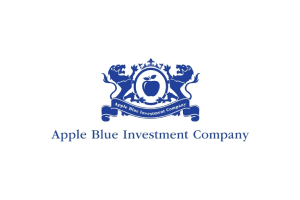


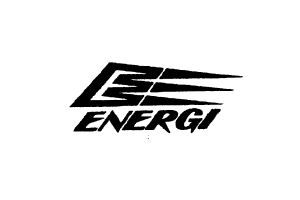
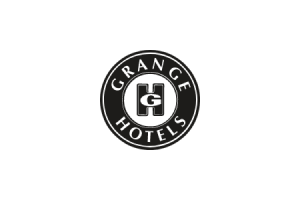
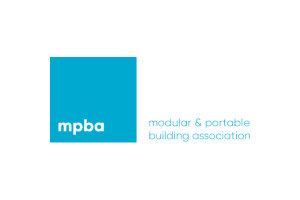

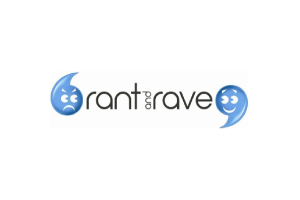
Book your FREE consultation session
Need some advice? Got some burning questions that you want answering?
It only takes two minutes


